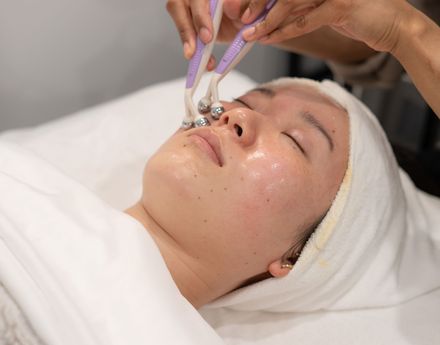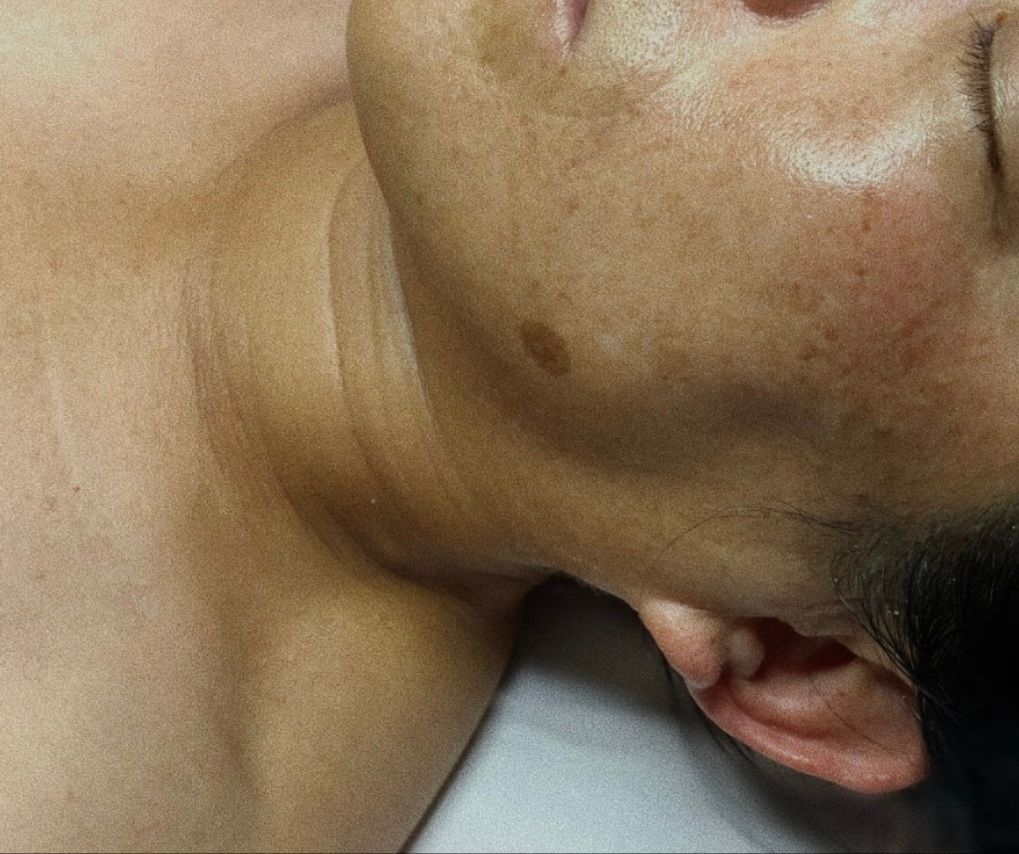August 25, 2025
Hyperpigmentation is the result of an overproduction of melanin in the skin. While melanin is essential for protecting us from UV damage and giving our skin, hair and eyes their color, excessive or uneven production can lead to dark patches and spots. The most common types people seek treatment for include post-inflammatory hyperpigmentation (PIH), solar lentigo, and melasma. It can be triggered by multiple factors such as sun exposure, hormonal changes, inflammation, certain illnesses, or even medication. Let's break it down further. What is hyperpigmentation? Hyperpigmentation occurs when melanin is produced in excess and distributed unevenly across the skin. This often results in darker spots or patches. While sun exposure is one of the biggest triggers-- prompting the skin to release melanin as a protective response-- internal factors such as hormones or inflammation can also play a role. This condition is more prevalent in darker skin tones across all ethnicities, including Asian, Black, Hispanic, and Middle Eastern individuals. Types of Hyperpigmentation 1. Post Inflammatory Hyperpigmentation (PIH) PIH develops in areas where the skin has been injured or inflamed - commonly after acne, cuts, or scrapes. The immune system respond by producing excess melanin. How to reduce PIH: Prevent acne and minimize injuries when possible. Keep pores clear by double cleansing daily and exfoliating weekly. 2. Solar Lentigo ("Liver Spots") Solar lentigo appear as darkened patches on areas frequently exposed to the sun. UV radiation stimulates melanocytes (melanin-producing cells), which can create an uneven distribution of pigment. If melanin is evenly spread, the skin tans. However,when produced in excess, stubborn dark spots form. These sun-induced spots are notoriously difficult to treat, which makes prevention through sun protection especially important. 3. Melasma ("Pregnancy Mask") Melasma is strongly linked to hormonal changes, pregnancy, or birth control. It commonly appears as brown or gray-brown patches across the cheeks, forehead, or upper lip. Because it often resembles a mask, it is referred to as the "pregnancy mask". How to Treat Hyperpigmentation While treatment methods vary, the foundation of every plan is prevention and consistency. 1.Daily Sun Protection Broad-spectrum sunscreen should be applied every single day. Even minimal sun exposure can stimulate melanin production, especially for those prone to hyperpigmentation. 2. Exfoliation Exfoliating helps shed pigmented skin cells ad reveal fresh, evenly toned skin. Retinol: Increases cell turnover, promoting the growth of pigment-free skin cells. AHAs: Help remove dead, pigmented cells from the surface. 3.Tyrosinase Inhibitors These ingredients suppress melanin production at the source by inhibiting the tyrosinase enzyme. Common options include: Hydroquinone (prescription only) Arbutin Kojic Acid Bearberry Extract Niacinamide Glutathione Tranexamic Acid When incorporated into a consistent skincare routine, these ingredients help fade existing discoloration and prevent new spots from forming. 4. Professional Treatments For more stubborn or severe hyperpigmentation, professional procedures performed by dermatologists or licensed skin specialists can deliver faster and more targeted results. Some options include: Chemical Peels: Use acids to exfoliate and lighten pigmentation. Laser Therapy: Targets deeper pigmentation with precision. Liquid Microneedling: Stimulates skin repair and can improve pigmentation when combined with topical serums. IPL (Intense Pulsed Light): Uses light energy to break down pigment and even out skin tone. These treatments should always be performed by a qualified professional to minimize risks and ensure optimal results. Conclusion Hyperpigmentation is a common yet complex skin concern, often influenced by both external and internal factors. While it may not disappear overnight, a combination of prevention, and corrective treatments both at home and in a professional clinic can significantly reduce its appearance. Consistency is key--protecting your skin daily and adopting the right routine can help restore a more even, radiant complexion. Ready to Take the Next Step? Visit us at Gymno to get a customized plan to treat your hyperpigmentation. We offer a variety of treatment options designed to help you achieve the best results for your skin.





































































